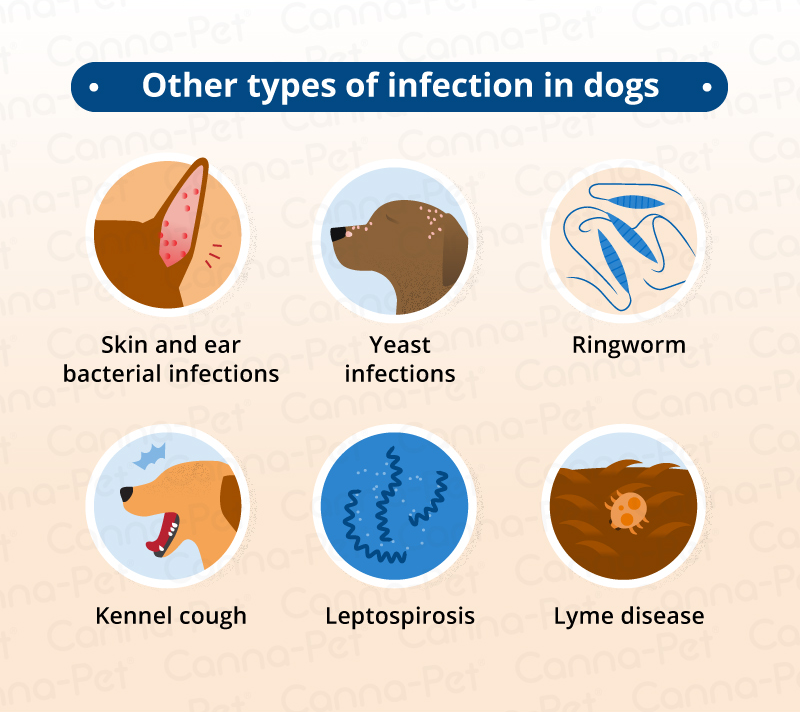Causes of Swollen Lymph Nodes in Dogs
Lymph nodes enlarge when the immune system is activated, usually by a disease process. If just one or two lymph nodes are enlarged, this often indicates a localized disease. For example, an infected toe could result in enlarged lymph nodes that drain that area.
A systemic infection in which the whole body is affected will often cause many or all of the lymph nodes to be enlarged. Examples include:
What Are Swollen Lymph Nodes in Dogs?
The lymphatic system is part of your dog’s immune system. It includes lymph nodes and a network of lymph vessels called lymphatics that run alongside your dog’s regular blood vessels. The lymph system performs several important functions in your dog’s body, including transporting white blood cells, removing waste products from tissues and cells, and helping to produce disease-fighting antibodies.
Lymph nodes are small, bean-shaped organs that contain immune cells. When your dog’s body is invaded by viruses or bacteria, or your dog has a disease that triggers an immune response, the lymph nodes become enlarged as they work to fight off the invader. Swollen lymph nodes are called lymphadenopathy or lymphadenomegaly.
Your vet can tell the difference between swollen lymph nodes and regular lymph nodes by feeling the lymph nodes that are closer to the skin. Lymph nodes that can be felt through the skin are known as “palpable” nodes. These are located in a few areas:
During a physical exam when your veterinarian looks like she is petting your dog, she is actually feeling for abnormalities in the lymph nodes, as well as unusual lumps or bumps. Generally, the only palpable lymph nodes are the submandibular and popliteal in a healthy dog.
Symptoms of Lymph Node Inflammation (Lymphadenopathy) in Dogs
Lymphoma is a relatively common cancer in dogs, so it’s a good idea to get your pet checked out if you notice persistent or sudden swelling in this area. These are some of the signs to look for.
Enlarged lymph nodes
Other symptoms
Types
Your dog has several different types of lymph nodes.
External – these are lymph located close to the surface where swelling can cause a palpable lump. On dogs, they are found in five specific areas of the body.
Submandibular –on the jaw
Prescapular – shoulder
Axillary – armpit area
Inguinal – abdomen
Popliteal – knee area on the back legs
Internal – these are lymph nodes located inside the chest and abdominal cavities; enlargement is not detectable with palpation, but it will be visible on an x-ray
Does your dog have cancer? Lymphoma in the Dog. Vet explains symptoms, diagnosis, and treatment.
There are many reasons your dog could have swollen lymph nodes. The most common assumption and fear is that your dog has Lymphoma, which is a quite serious diagnosis. And while this is a possibility, there are several other common health problems that could be causing these swollen glands in your dog.
Inflamed lymph nodes are referred to as Lymphadenitis, which is the enlarged of lymph nodes from either an infection or inflammation in dogs. An infection can arise from either a bacterial or fungal infection, which are both treatable and curable illnesses.
In contrast, inflammation occurs most commonly when your dog has a tissue reaction to an injury. This could be caused from a number of injuries including splinters and surface abrasion.
The most common type of bacterial infection in dogs is Streptococcal, or Strep throat. While the bacteria can become infected in the intestines, urinary, and genital tract, most commonly dogs get Streptococcal in their respiratory system. Typically, the lymph nodes in dog’s throats become most swollen during this type of bacterial infection.
Dogs have comparable Strep throat symptoms to human infections including difficulty swallowing, coughing, fever, pain and lethargy. A similar course of treatment can also be taken which includes antibiotics and plenty of fluids.
Although curable, Strep throat can be incredibly painful for your dog so it’s important to try your best to keep them protected from the infection. Avoiding uncleanly areas with a lot of dogs can help decrease the chances of getting this bacterial infection, however there’s no sure way to avoid contraption.
Younger dogs tend to get the infection more easily because their immune systems are still developing. In contrast, older dogs commonly get Strep as their immune systems start to deteriorate.
There are several other types of bacterial and fungal infections that your dog can contract with very similar symptoms. Therefore, it is important to take your dog to the vet when you notice unusual behavior. The vet will be able to run a series of tests depending on the severity of the infection including blood work, urine samples, and lymph node aspiration (liquid) can be examined under a microscope.